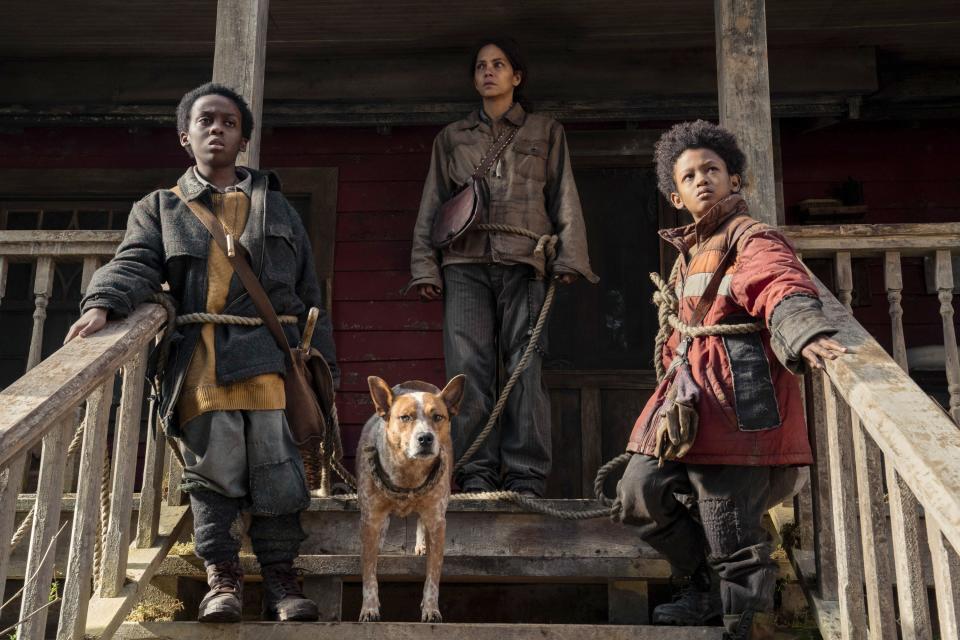
Sep. 12—Neighbors of the proposed subdivisions in North Kalispell on Tuesday voiced safety concerns over what they say is a lack of road infrastructure to support the development.
The Kalispell Planning Commission held a work session to discuss a revised planned unit development proposal along Tronstad Road next to U.S. 93. No votes were taken on the project.
The developers Jon Sonju and Frank Garner, two former Republican lawmakers, are looking to develop twin subdivisions, Tronstad Meadows and Whitetail Crossing, on around 110 acres between the highway and Whitefish Stage Road.
The land would see 355 single-family lots ranging from 6,000 to 11,000 square feet designated under the lowest density residential zoning offered by the city.
An initial proposal that included 25 additional lots and higher density zoning was denied by City Council in June. During public comments that lasted about an hour, neighbors said the revised proposal did not make meaningful changes to address pedestrian and vehicle safety that would become an important concern when people move in.
“This new application … is really lipstick on a pig. It’s still a pig. The plan really isn’t fooling anyone,” Ming Munzing, a resident on Tronstad Road said on Tuesday. “It feels like a blatant disregard for the real safety and infrastructure concerns that the community raised just a few short months ago over and over again.”
Munzing, a developer herself, said she supports construction in the city but urged that it be done sensibly. She said that a petition disproving of the subdivision reached 600 signatures.
Community members also argued that the development did not mesh with the current feel of the area.
“I think the density is far too much for this area and does not fit the character of the surrounding environment,” said Travis Taylor, who lives on Birch Grove Road.
Eric Mulcahy, a land use planner representing Garner and Sonju, said that many infrastructure changes were made in adherence to community and Council concerns.
“We did take a deep look at the subdivision when it didn’t make it through Council the first time around,” he said.
Mulcahy argued that the proposed development appropriately fits with the nearby suburban and mixed-use residential areas, which include Quail Meadows and Silver Brook Estates to the west.
Planning Commission President Chad Graham voiced his disproval of the subdivision without prior implementation of a traffic signal at the intersection of Tronstad Road and U.S. 93.
Installation of a signal, however, is determined by the Montana Department of Transportation.
The state agency uses criteria known as “warrants” to determine the necessity of traffic signals. Warrants include pedestrian volume, vehicle volume and crashes. Four-hour and eight-hour monitoring of specific areas are also conducted.
A traffic impact study conducted for the developer by Abelin Traffic Services in July projected the development would increase traffic and subsequently result in more crashes, prompting the need for a signal.
Deputy Public Works Director Keith Haskins said that MDT tends to follow federal highway guidelines for traffic lights and that using projected data is not typical for the agency.
Graham suggested placing a condition in the developer agreement that would require the traffic signal be constructed prior to development.
“When I am reading something like, ‘Well the crash data will be met after the subdivision goes in,'” Graham said noting that would mean it would take accidents or a death to prompt the installation of a traffic light.
Development Services Director Jarod Nygren said that the commission would have to present findings of fact that account for public input before the proposal is formally brought to the commission.
“It may be in contradiction to the state, but the state would have to figure that out,” Nygren said.
Planning commission member Rory Young warned of a “Catch-22,” where the subdivision cannot move forward because a traffic light can’t be authorized or risk litigation if the findings of fact do not hold legal weight.
Mulcahy said that the developers met with state highway officials, who allowed for road realignment, a northbound right turn lane on to Tronstad and reconstruction of the left turn lanes on the highway during beginning stages of development.
Such a move is not usual for MDT, said Mulcahy, who said the department has often been reactionary to growth over the last number of decades.
“We are still hoping that we can get a light to go up in the final plat of our first phase,” he said.
Haskins said that if there were to be a high propensity of accidents in the area, the infrastructure would be in place to move ahead with signal implementation faster than the MDT’s usual timeline of five to 10 years.
Reporter Jack Underhill can be reached at junderhill@dailyinterlake.com or 758-4407.
EMEA Tribune is not involved in this news article, it is taken from our partners and or from the News Agencies. Copyright and Credit go to the News Agencies, email news@emeatribune.com Follow our WhatsApp verified Channel




